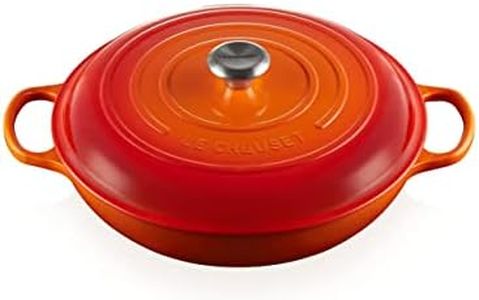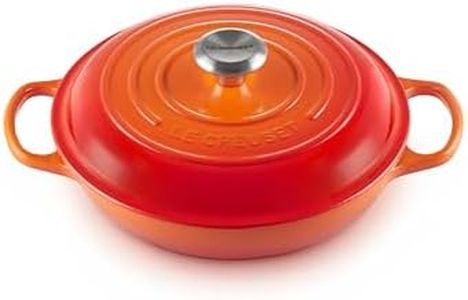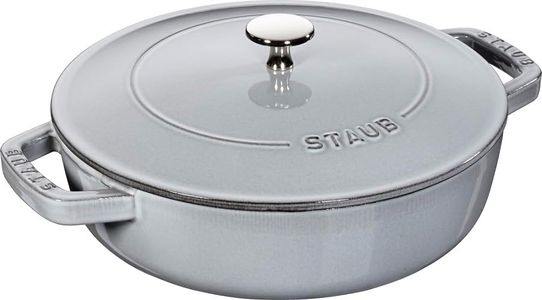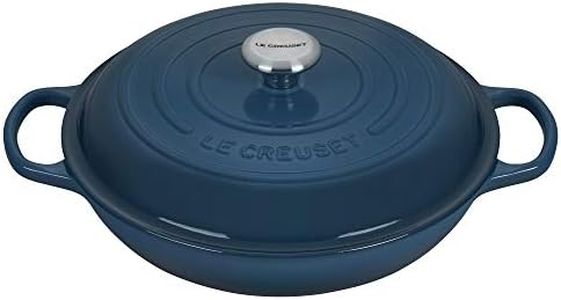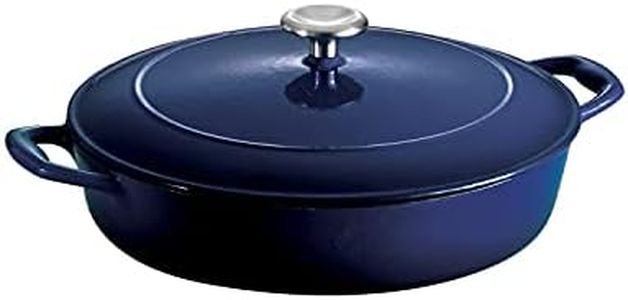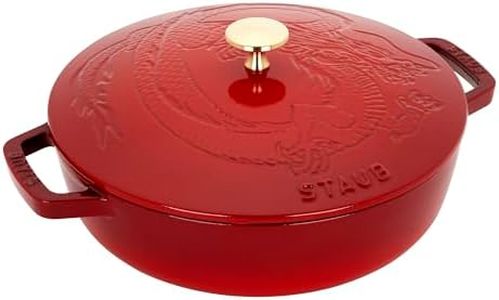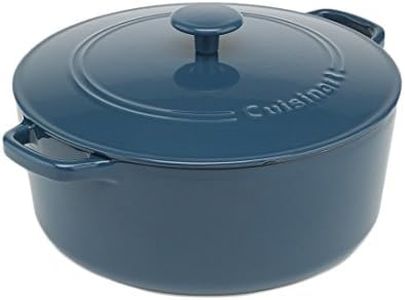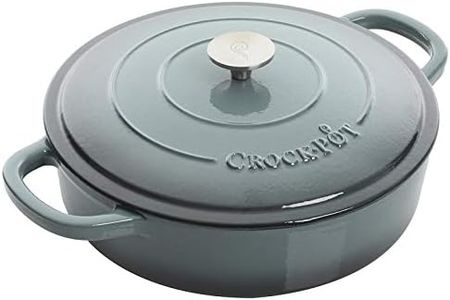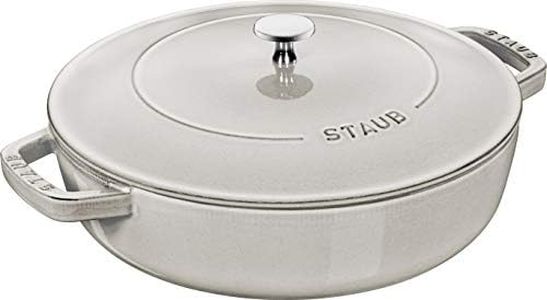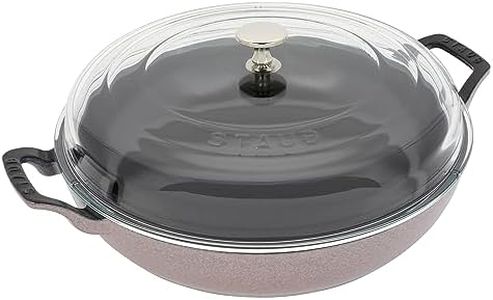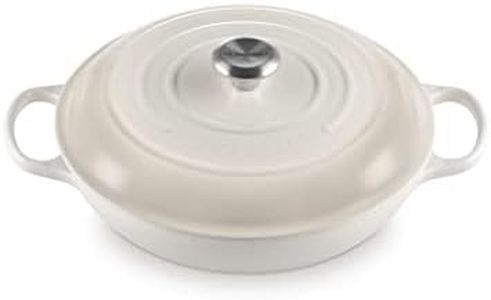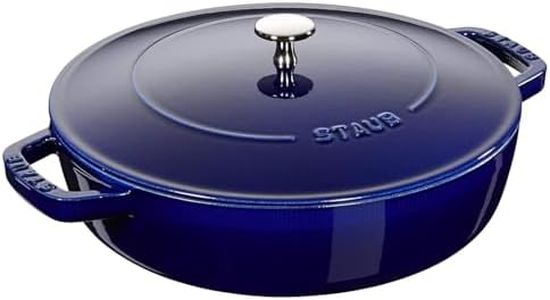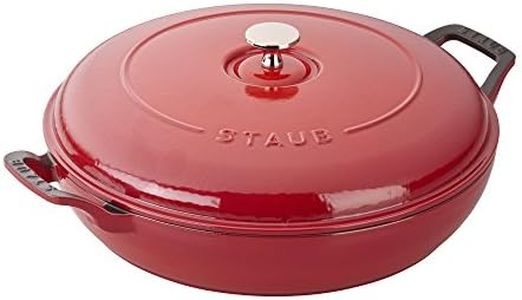We Use CookiesWe use cookies to enhance the security, performance,
functionality and for analytical and promotional activities. By continuing to browse this site you
are agreeing to our privacy policy
10 Best braisers
From leading brands and best sellers available on the web.Buying Guide for the Best braisers
Choosing the right braiser makes cooking a variety of dishes easier and more enjoyable. A braiser is a versatile piece of cookware, perfect for browning, slow-cooking, roasting, and even baking. When selecting a braiser, it's important to think about what you plan to cook most often, how much food you usually prepare, and how you'll use and care for your cookware. Understanding the main features will help you find a braiser that fits seamlessly into your cooking routine and lasts you a long time.MaterialThe material of a braiser affects its heat distribution, weight, durability, and how much maintenance it requires. Common materials include cast iron, stainless steel, aluminum, and ceramic. Cast iron is excellent for even, slow heat but is heavy and requires special care; enameled versions are easier to clean. Stainless steel is lighter and easy to clean, but may not hold heat as well. Consider which material matches your cooking habits—go for heavy, enameled cast iron if you love slow-cooked stews, or lightweight stainless steel for quicker meals and easy cleanup.
Size (Capacity)Braisiers come in different sizes, generally measured in quarts or liters, which determines how much food you can cook at once. Small (2-3 quarts) works well for singles or couples, medium (3.5-4.5 quarts) is good for small families, and large (5-7 quarts and up) is suitable for entertaining or meal prepping. Think about your typical meal sizes—choose a large braiser for bigger gatherings or batch cooking, and a smaller one if you're usually making meals for one or two people.
Shape and DepthBraisers typically have a wide base and shallow sides, but the exact shape and depth can vary. A wider base allows for better browning and more even cooking when making dishes like roasts or braised vegetables. Shallower braisers are easier for stirring and evaporate liquids a bit faster, while deeper ones hold more liquid and ingredients. Your preferred cooking styles will guide your choice—opt for a wide, shallow braiser for searing and finishing in the oven, or a deeper one for recipes with more sauce or liquid.
Lid Fit and WeightA well-fitting, heavy lid is essential for a braiser, as it helps trap moisture, heat, and flavor during cooking. Lighter lids tend to let more steam escape, which can dry out your food. Check that the lid sits snugly on the pot so it keeps moisture in, especially if you like slow-cooked dishes or recipes that depend on steam and flavor retention. If you mostly make quick or dry-cooked meals, lid heaviness may be less critical.
Oven and Stovetop CompatibilityNot all braisers are safe for every heat source—some can be used in the oven, on induction, or on standard stovetops, while others may be restricted. Always look at the manufacturer's instructions about maximum temperatures and compatible cooking surfaces. If you like to start dishes on the stove and finish them in the oven, make sure your braiser can handle both and is rated for high temperatures.
HandlesHandles affect how easy it is to lift and move your braiser, especially when it's hot and heavy. Large, sturdy handles offer a better grip and make it easier to carry safely, even with oven mitts. If you expect to transport your braiser from stovetop to oven frequently, or serve dishes straight from the pot, pay attention to the handle size and ergonomics.
Ease of CleaningSome braisers are easier to clean than others. Enameled surfaces resist sticking and stains, making cleanup simpler, while bare cast iron needs special seasoning and care to avoid rusting. Stainless steel and ceramic are usually low-maintenance. Think about how much time and effort you want to spend on cleaning—choose a braiser with a surface that matches your preference for maintenance.
